
Rigel is one of several brilliant stars that grace our night sky in January. It’s also the brightest star in one of the most beloved of constellations, Orion the Hunter. Rigel appears blue-white to the eye. It’s a stunning contrast to red Betelgeuse, Orion’s second-brightest star. Classified as a blue supergiant, Rigel is in the latter stages of its stellar lifetime and will someday become a supernova. Hidden in Rigel’s brilliance are at least three other fainter companion stars that can only be detected using large telescopes.
The 2024 lunar calendars are here! Best New Year’s gifts in the universe! Check ’em out here.
How to find Rigel
At magnitude 0.13, Rigel is the 7th-brightest star in the heavens, and the 5th-brightest as viewed from North America. It appears at a lower corner of Orion the Hunter, one of the sky’s best-known constellations. It’s easy to spot because of its brightness and also because of its distinctive blue-white color.
You can catch Orion in the east before dawn during the late Northern Hemisphere summer. On January evenings, Orion shines prominently in the mid-evening sky. Look for Orion high in the south on northern winter (southern summer) evenings. By early March, as soon as the sun sets, Orion is at its highest in the sky. By early May, as seen from around the globe, Orion sets before the sky has a chance to get really dark.
Look for Orion
To find Rigel, first look for its constellation, Orion. You’ll notice three stars in a short, straight line. These stars mark Orion’s Belt. An imaginary line in the sky, heading generally southward – that’s at a right or 90-degree angle from Orion’s Belt – takes you to Rigel. (If you instead draw in the other direction, you’d come to Betelgeuse, with its distinctive reddish tinge.)
Do not confuse Rigel with Sirius, which is farther to the east and farther south. Sirius is similar in appearance, but significantly brighter than Rigel.
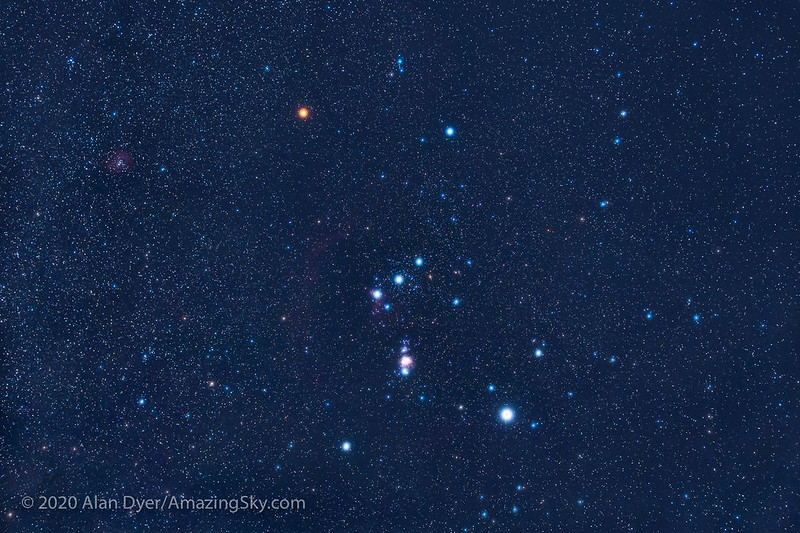
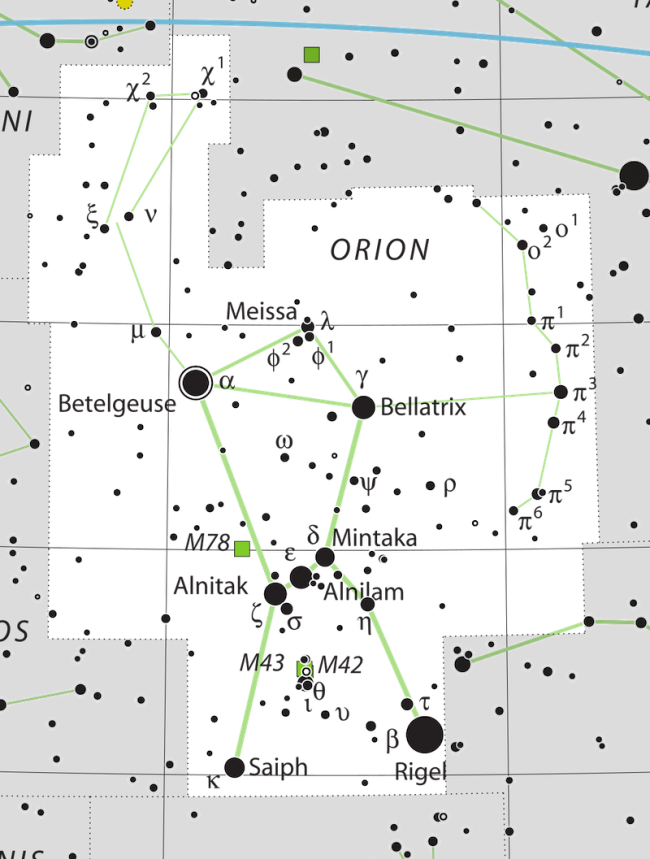
The science of Rigel
We couldn’t live as close to Rigel as we do to our sun. That’s because its surface temperature is much hotter, about 21,000 degrees Fahrenheit (11,600 degrees Celsius) in contrast to about 10,000 F (5,500 C) for the sun.
Counting all its radiation (not just visible light, but infrared, ultraviolet and so on), Rigel emits about 120,000 times more energy than the sun. Astronomers calculate this luminosity based on a distance of 860 light-years, a distance derived from data collected by the Hipparcos space telescope. With such enormous energy, you might be surprised to find that Rigel has only 21 times more mass, and is more than 70 times the diameter of our sun.
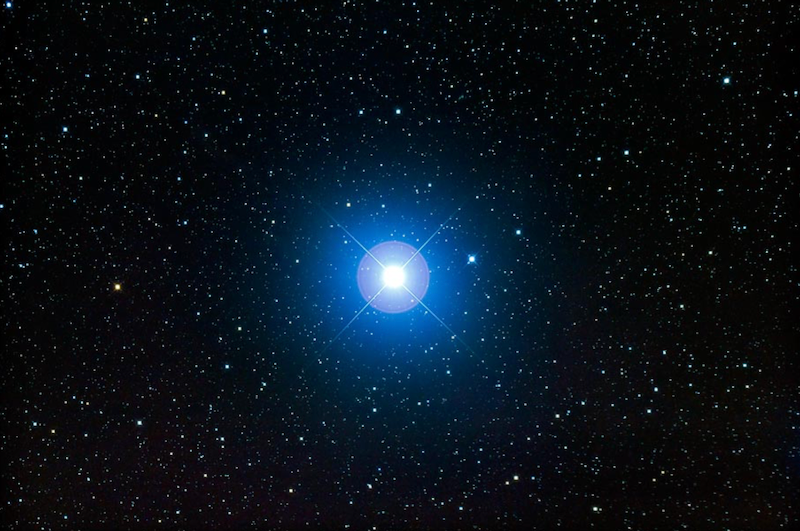
Rigel is a blue supergiant star, designated as type B8 Ia. According to stellar evolution theory, it is a massive star entering the latter part of its life, having exhausted most of the hydrogen fuel in its core. It’s also a variable star that shows slight irregular fluctuations in brightness. Someday, it will explode as a supernova.
Yet Rigel is not one of the galaxy’s largest stars, as the video below – from the European Southern Observatory – shows.
A little-known fact about Rigel: it is the largest star in a multiple star system. There is a close companion about 400 times fainter than Rigel. That “companion” is actually two stars that can only be resolved by large telescopes. And one of those two companion stars is what’s known as a spectroscopic binary: two stars so close they can be distinguished as two distinct entities only via spectroscopic observations.
In other words, the Rigel system has four known stars!
History and mythology
Historically, the brightest star in a constellation receives the designation Alpha, the second-brightest is Beta, and so on. This system isn’t used for Orion’s stars, however. Instead, the red star Betelgeuse is Alpha Orionis, and Rigel is Beta. But Rigel is the brightest star in Orion.
This deviation from standard stellar designations might be because Betelgeuse is a variable star and has been known to at least approach Rigel in brilliance. The German astronomer Johann Bayer applied the designation Beta Orionis to Rigel in the early 1600s. He sought to systematize stellar naming conventions. It’s possible Betelgeuse was brighter around this time. Nowadays, Rigel outshines Betelgeuse.
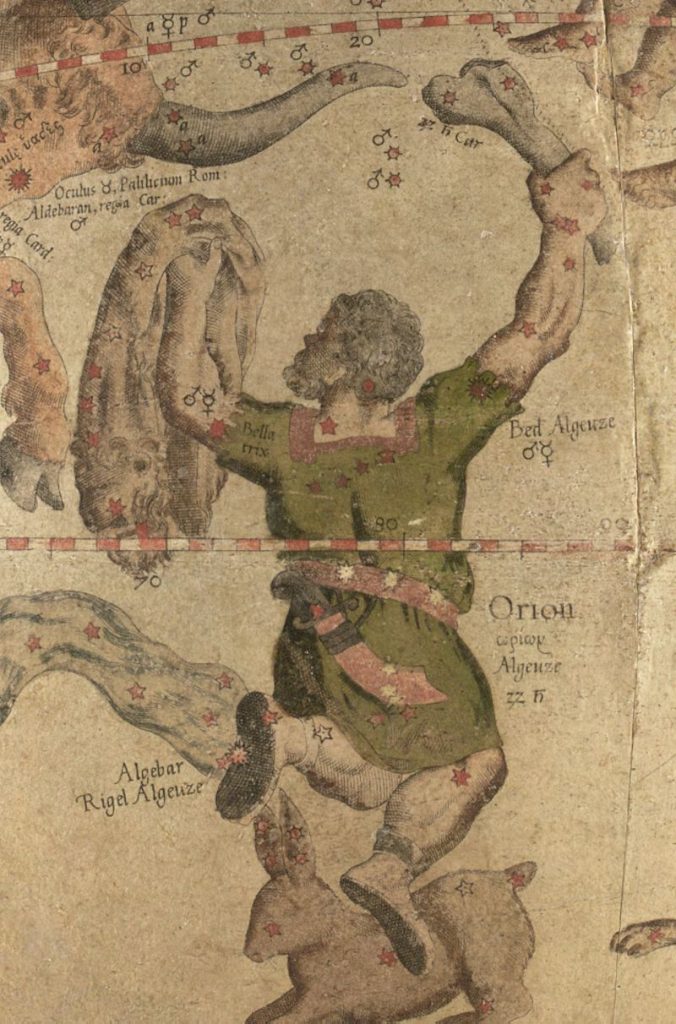
The name Rigel comes from an Arabic phrase frequently translated as “The Left Foot of the Central One.” Although Orion was depicted as a giant or warrior in many cultures, in the original Arabic it might have been a reference to a black sheep with a white spot or spots. Thus in the original form, Rigel might have designated the left foot of a sheep! Now, however, many people know it as the left foot of Orion the Hunter.
Aurvandill’s big toe
The mythology related to Rigel is sparse and unclear. Perhaps the most interesting connection is in Norse mythology, which sometimes identified Orion with Aurvandill (also Orwandil, Earendel and others). According to some, Aurvandill was traveling with his companion, the god Thor, when his big toe froze in an unfortunate river-crossing incident. Thor broke off the frozen digit and threw it into the sky, where it became the star we see as Rigel. In some variations, Aurvandill’s other big toe became faint Alcor in Ursa Major.
Rigel’s position is RA: 05h 14m 32.3s, Dec: -08° 12′ 05.9”.
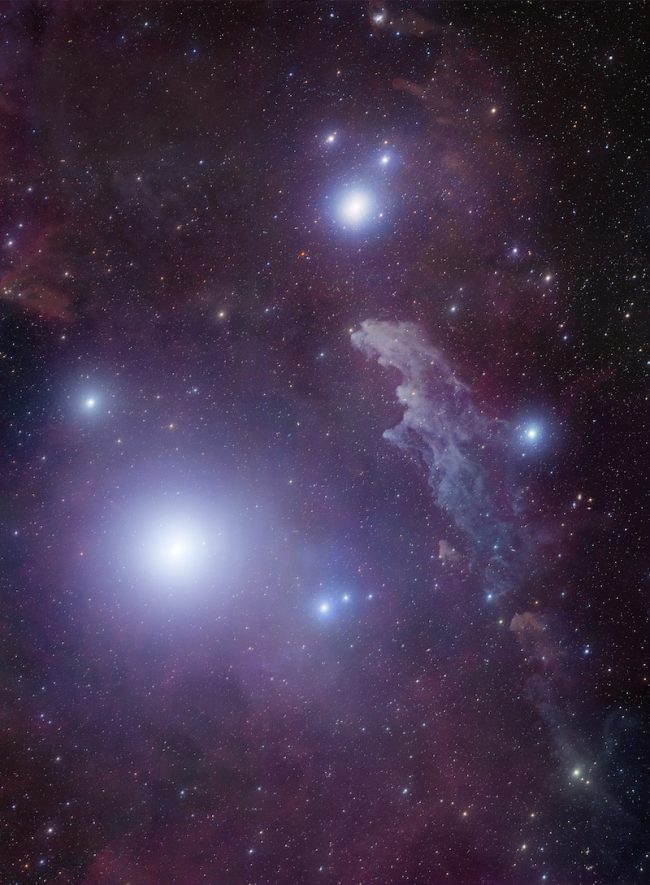
Bottom line: Rigel, the brightest star in the constellation Orion the Hunter, shines a brilliant bluish-white color. It’s much hotter and more massive than our sun, and someday, Rigel will explode as a supernova.











